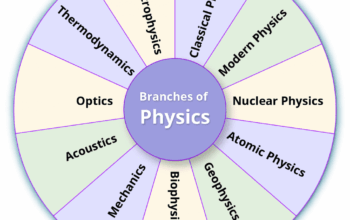In the annals of scientific inquiry, the phrase “collaborating with enemies” evokes images of paradoxes, tension, and ultimately, a complex dance of diplomacy and intellect. It encapsulates the multifaceted relationship between science and politics, especially in the geopolitical arena. Science, often thought of as a bastion of objectivity, finds itself entangled in the intricate web of human conflict. The notion that scientists can and do work alongside individuals or institutions from opposing factions raises profound ethical and practical questions. This article explores the intersections of physics and politics, providing an extensive examination of historical and contemporary instances where collaboration has flourished despite antagonistic backgrounds.
At its core, the collaboration between scientists from rival nations is not merely a matter of intellectual curiosity; it arises from an urgent necessity. A common observation reveals that many of the most significant advancements in physics—be it in areas like nuclear energy, climate science, or even space exploration—often emanate from transnational partnerships. This phenomenon underscores a deeper fascination with the idea that shared human experience transcends political divisions. The very essence of scientific inquiry hinges on collaboration, a principle rooted deeply in the scientific method, which posits that knowledge is cumulative and progressive.
A historical lens through which to view this collaboration is the Cold War—a period characterized by ideological divides yet marked by scientific breakthroughs achieved through partnerships that defied political dogma. The space race, an emblematic struggle between the United States and the Soviet Union, saw groundbreaking cooperation amidst fierce rivalry. The Apollo-Soyuz Test Project, which culminated in a joint flight in 1975, epitomized the potential for collaboration in the name of science. Despite the hostilities that defined the era, physicists and engineers from both nations united in the pursuit of technological advancement—a pursuit often propelled by the shared allure of exploration and discovery.
Moreover, international scientific collaborations have significant implications for addressing global challenges, such as climate change and pandemics. Scientific problems do not adhere to political boundaries; they require comprehensive, multidisciplinary approaches. For instance, the Large Hadron Collider (LHC) serves not only as a monumental phyisical structure but also as a testament to collaborative ingenuity. Physicists and researchers from around the globe, regardless of their national affiliations, have congregated at CERN in Switzerland to investigate fundamental questions regarding the fabric of matter. The discoveries made at the LHC necessitate a spirit of cooperation, showcasing how collaborative efforts can yield monumental advancements in our understanding of the universe.
The ethics of such collaborations, however, cannot be dismissed. The specter of morality looms large when considering the implications of scientific advancements born from teamwork with those historically deemed as ‘enemies.’ In many cases, the technology developed can have dual-use potential—where innovations intended for peaceful purposes can also be harnessed for militaristic endeavors. The ethical dilemma underscores an important responsibility that scientists bear in their quest for knowledge. Transparency, accountability, and conscientious stewardship of scientific advancements must guide these collaborative endeavors.
Furthermore, the cultural dimensions of scientific collaboration introduce another layer of fascination. Scientists often find camaraderie in their shared passion for inquiry that eclipses nationalistic sentiments. The language of science, governed by quantitative rigor and empirical evidence, serves as a universal means of communication. In this context, the physicist emerges not just as an individual seeking knowledge but as a diplomat of sorts—navigating the complexities of human relationships amidst geopolitical tensions. Emotional intelligence and cultural sensitivity become indispensable traits, allowing scientists to forge connections across divides while advancing collective goals.
In contemporary times, a plethora of collaborative initiatives showcases the enduring relevance of this phenomenon. Projects such as the International Space Station (ISS) bring together astronauts, engineers, and researchers from various countries, reinforcing the notion that science possesses a unique ability to unify disparate sectors of society. These partnerships foster a culture of innovation and discovery that enriches not only the scientific community but humanity as a whole. The ISS serves as a microcosm of our collective aspirations—a floating laboratory where scientific endeavors unfold in a microgravity environment, devoid of terrestrial political constraints.
As we dissect the intricate interplay between physics and politics, it becomes increasingly evident that collaboration with potential adversaries is an indispensable element of scientific progress. The historical precedents, ethical considerations, and cultural dimensions offer a rich tapestry to understand the motivations behind such alliances. Scientists must navigate the treacherous waters of human conflict, yet their commitment to inquiry often leads them to bridge gaps that seem insurmountable. The pursuit of knowledge persists despite the backdrop of rivalry, underscoring a fundamental truth: in the realm of science, curiosity and cooperation may ultimately prevail over enmity.
In conclusion, the phrase “collaborating with the enemy” unveils a profound understanding of the relationship between science and society. As physicists continue to collaborate across borders, perhaps they illuminate the path toward a more harmonious coexistence, driven by shared intellectual curiosity. The idea that fear and suspicion yield to collaboration not only enriches our understanding of the cosmos but serves as a beacon of hope in an era fraught with division. Thus, the fusion of political and scientific domains emerges not as a contradiction, but as a cornerstone for innovation and human advancement—propelling humanity forward in the ongoing quest for knowledge.










